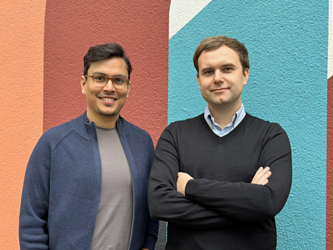Different experiences: Key takeaways from the UX, CX and MR conference
Different but complementary
There is plenty of crossover between UX, CX and MR, however, the three are separate disciplines, and that needs to be carefully considered from the outset of a project. Sarah Jousiffe, head of qualitative, closeness and insight engagement at Sky, said researchers have to work out how the three disciplines can contribute to a project, and where one might be better suited to a task than the other two.
“We need to completely understand the core competencies of those different disciplines,” said Jousiffe. “We need to expand our toolkit – you cannot always use a hammer for every job, as sometimes you need a chisel. That’s what CX and UX bring.
“When we’re challenged on methodology, it tends to be that the business wants to make sure we have chosen the right methodology for the question that was asked so they can trust our recommendations and the insight we are giving.”
Diversity and research
It is important to take into account cultural differences when running research in multiple countries to ensure that the end result is suitable for the nation in which the research was run.
Melissa Gonsalves, co-founder and director of Colour of Research and director, strategic insight, at Differentology, said cultural differences in how and when technology was adopted should be considered when researching the subject. For example, India’s experience of digitalisation is different to the UK’s, US’s or China’s.
“Researchers should be cognisant of not just replicating research design and product based on Western perceptions of research,” Gonsalves said. “The legacy of what people have been through shows through their actions and usage. That is where bias comes in when we are in the West and doing research around the world. It is stepping back and saying ‘this has been our journey, what has been their journey and let’s understand that’.”
Mobile versus face-to-face
During the pandemic, researchers have had to rely on online research as face-to-face research has been rendered impractical due to Covid-19 restrictions. Tom Woodnutt, founder of Feeling Mutual Group, said researchers should embrace the benefits of conducting mobile or online research.
Group discussions in real time can sometimes lack depth compared with online research, Woodnutt said. For example, eight people in a two-hour group session would actually be speaking for 15 minutes per person, not including moderator time, which is not as good value for money as online alternatives.
“If you were doing an in-depth one-on-one, you would not accept 15 minutes of time as one person feeding back – it is just not enough,” Woodnutt said. “This is a shortcoming that asynchronous methods that run over a period of time completely overcome. I accept there are other benefits from real-time group discussions, such as the time to explore group dynamics, but if you want to understand what the individual thinks, feels and does, those group dynamics are not necessarily helpful.”
Good metrics
Alberto Ferreria, user research manager at Vodafone, said companies should consider a single unified metrics framework. Any metrics that a company was seeking to measure in research should be practical and tailored to the business.
“If we are looking at what encompasses a good metric in our perspective, it is something that should be comparable and relative to a time period, it should be valid over time, and it can focus on behaviour and attitude but should not be both at the same time,” Ferreria said.

We hope you enjoyed this article.
Research Live is published by MRS.
The Market Research Society (MRS) exists to promote and protect the research sector, showcasing how research delivers impact for businesses and government.
Members of MRS enjoy many benefits including tailoured policy guidance, discounts on training and conferences, and access to member-only content.
For example, there's an archive of winning case studies from over a decade of MRS Awards.
Find out more about the benefits of joining MRS here.














0 Comments